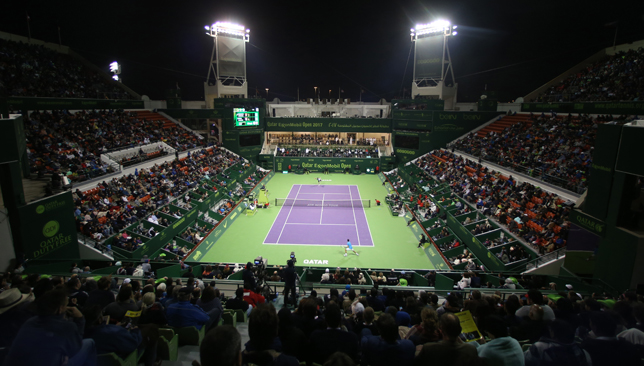
The 25th edition of the Qatar ExxonMobil Open wrapped up Saturday night with a showdown between the two best players in the world – a fitting finale to celebrate the tournament’s silver jubilee.
Professional tennis landed in the Arabian Gulf region 25 years ago at a time when players couldn’t even point to Qatar or the UAE on a map. The Doha event debuted in January 1993 and Dubai followed suit a month later.
Boris Becker was crowned the inaugural Qatar Open champion and the honour roll since then has featured one tennis legend after the other. Stefan Edberg, Roger Federer, Andy Murray, Rafael Nadal, Novak Djokovic… Those are just some of the names who have played in and won the tournament.
Doha has served as the season opener for the ATP for the past two and a half decades and despite it being just a 250-level event, organisers have managed to secure a world-class field each year – a field that is better than some 500-level tournaments. While there was also action in Brisbane, Chennai and Perth last week, Doha is where world No1 Murray and No2 Djokovic committed to play.
From the start, officials in Qatar wanted to use the tournament to promote the country and place it on the global sports map and to do so, a massive investment needed to be made. This year’s edition offered a prize pot of $1,334,270 compared to just $495,630 in Brisbane and $505,730 in Chennai, with all three tournaments being ATP 250s.
As has been the case for the past few years, the players were put up in the sea-side five-star Four Seasons hotel and chauffeured back and forth in sleek BMWs.
The Khalifa International Tennis and Squash Complex was created to play host to the Doha event, as well as become a home for the Qatar Tennis Federation, which owns and runs the venue and the tournament. With its 24 hard courts and 7,000-seater centre court stadium, the complex is an impressive landmark in the heart of the city.
Having covered the last seven-consecutive editions of the Qatar Open, I couldn’t help but notice how more and more local kids are seen playing tennis on the outside courts on the sidelines of the event. While both Doha and Dubai have significantly helped raise the profile of the Gulf when it comes to global sport, it must be noted that it is Qatar that has benefitted more in-house, creating grassroots initiatives to cultivate local talent and bringing in experts to take charge. Moroccan former world No25 Karim Alami is the technical director of the QTF and tournament director of the ATP event while his compatriot, ex-world No14 Younes El Aynaoui is responsible for Qatar’s national side.
What a start to the season! No. 2 @DjokerNole d. No. 1 @andy_murray 63, 57, 64 in Doha to take 2017's 1st 🏆: https://t.co/wGgKj3lHce #ATP pic.twitter.com/rYi5DINVoW
— ATP World Tour (@ATPWorldTour) January 7, 2017
While no Qatari player has broken through just yet, the federation brokers deals with several other governing bodies to ensure their young talents are given wildcards into ITFs around the world, and they’re also given a chance on the big stage at the Qatar Open each year, whether in the main draw or the qualifying rounds.
Qatar’s Emir Sheikh Tamim bin Hamad Al Thani is a strong supporter of the sport and has been in the stands on more than one occasion last week, including the match that featured a Qatari wildcard.
Big money may be a main attraction for the top players, but it’s doing things the right way that has kept the Qatar Open on the professional calendar and its spreading of tennis culture among its youth that will one day create a local champion.